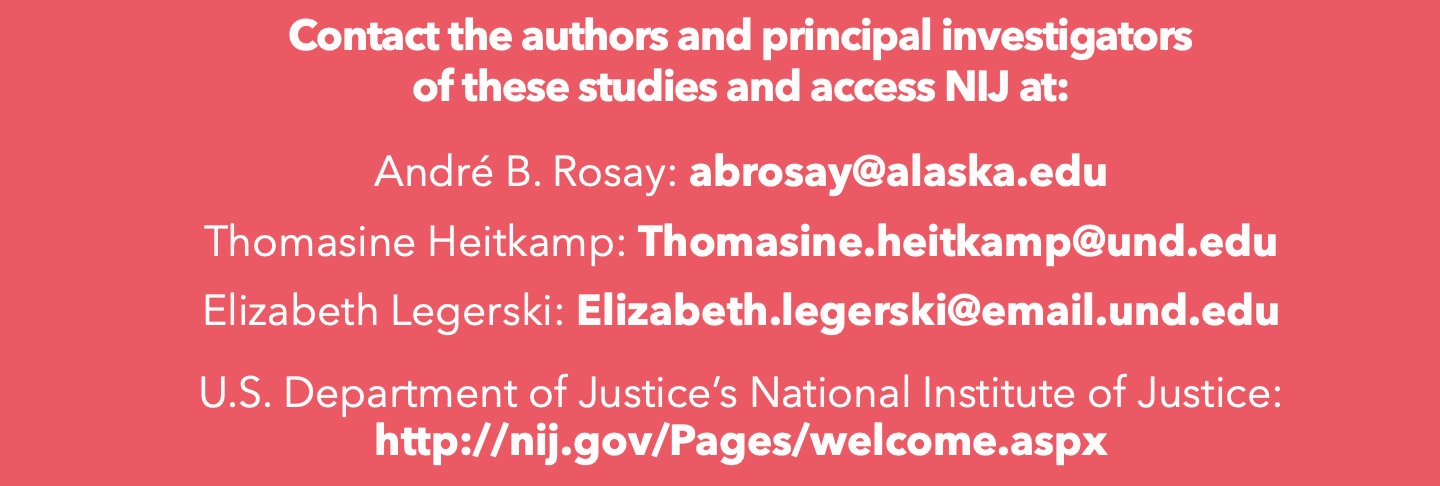NIJ Recently Released Research on Violence Against American Indian Women
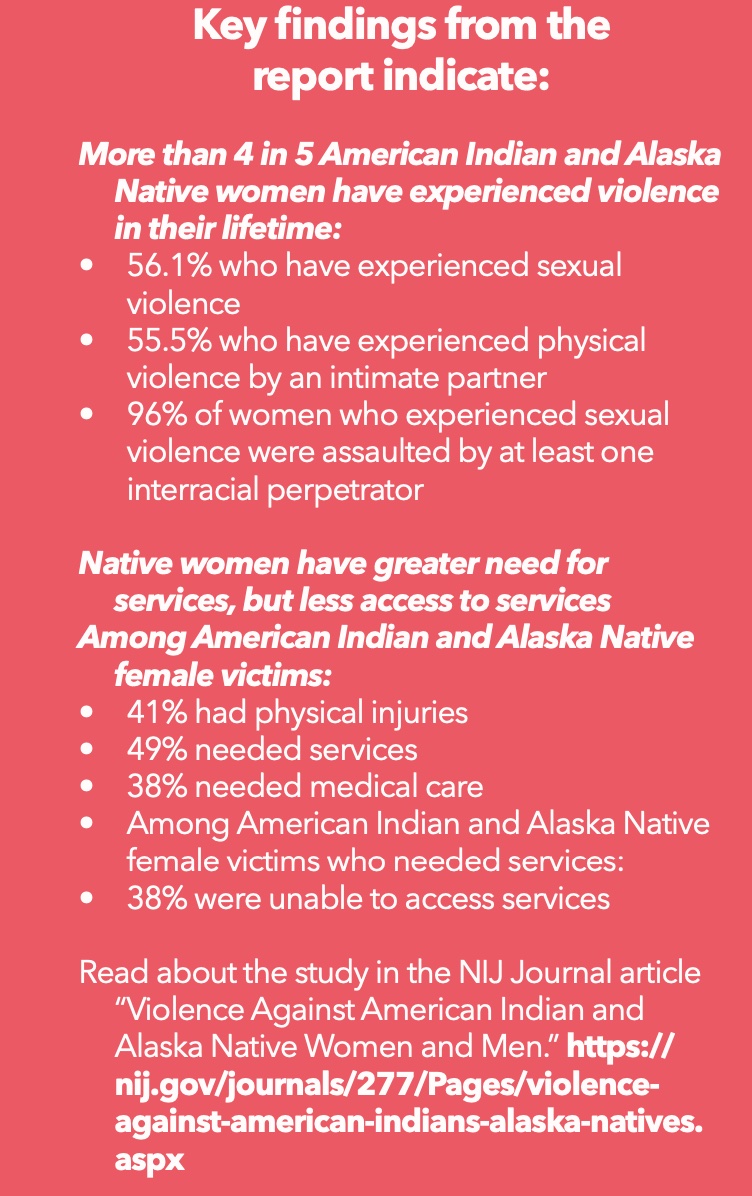 In 2016, the National Institute of Justice (NIJ) released two studies significantly increasing awareness of violence against American Indian and Alaska Native women. Brief overviews of these important studies are provided below with contact information for the researchers. For those interested, the summaries and full reports of these studies are available on the NIJ website.
In 2016, the National Institute of Justice (NIJ) released two studies significantly increasing awareness of violence against American Indian and Alaska Native women. Brief overviews of these important studies are provided below with contact information for the researchers. For those interested, the summaries and full reports of these studies are available on the NIJ website.
Violence Against American Indian and Alaska Native Women and Men: 2010 Findings from the National Intimate Partner and Sexual Violence Survey
On May 5, 2016, the NIJ published its latest research report, written by Dr. André Rosay, examining the prevalence of intimate partner and sexual violence against American Indian and Alaska Native women and men.
against American Indian and Alaska Native women and men.
Using a large nationally representative sample from the 2010 National Intimate Partner and Sexual Violence Survey, the report provides estimates of sexual violence, physical violence by intimate partners, stalking, and psychological aggression by intimate partners. It also provides estimates of interracial and intraracial victimizations and briefly examines the impact of violence. Results are expected to raise awareness and understanding about violence against American Indian and Alaska Native women and men.
The Impact of the Growing Oil Industry on Domestic Violence, Dating Violence, Sexual Assault, and Stalking in North Dakota and Montana
In December 2016, NIJ released the study on “The Impact of the Growing Oil Industry on Domestic Violence, Dating Violence, Sexual Assault, and Stalking in North Dakota and Montana.” Provided below are excerpts from summaries of the findings specific to the two tribes located in the Bakken region and participants in the study. The research was conducted by five faculty members at the University of North Dakota (UND) from 2014– 2016. The NIJ funded this three- year, mixed-methods exploratory study. Individual interviews and focus groups were conducted between May 2014 and September 2015 to assess perceptions of the impact of oil activity on incidents of interpersonal violence. These interviews and focus groups included 185 people residing in 33 counties in the Bakken region of North Dakota and Montana.
Findings Specific to the Fort Peck Assiniboine and Sioux Tribes
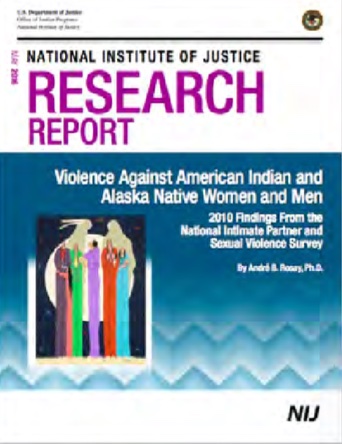 The Fort Peck Assiniboine and Sioux Tribes, located in northeast area of Montana on the north side of the Missouri River, were identified as an important part of the study region. The reservation encompasses four counties, including Roosevelt, Valley, Sheridan, and Daniels Counties. According to recent U.S. Census data, Fort Peck has a total population of 10,321 and is 110 miles long and 40 miles wide.
The Fort Peck Assiniboine and Sioux Tribes, located in northeast area of Montana on the north side of the Missouri River, were identified as an important part of the study region. The reservation encompasses four counties, including Roosevelt, Valley, Sheridan, and Daniels Counties. According to recent U.S. Census data, Fort Peck has a total population of 10,321 and is 110 miles long and 40 miles wide.
One of themes to emerge from the interviews included participants conveying their belief that the population increase in the area due to oil activity resulted in an increase in crime within the Bakken region generally and, more poignantly, a disproportionate increase in violent crime. An increase in domestic violence and sexual assault cases was also noted, along with concerns about underreporting. Many participants further noted the increase in severity of crimes and linked these changes to concerns about increased gang activity in the area. Many participants described concerns about the growth of registered and unregistered sex offenders on their tribal lands and in the region following oil development. Participants also described the difficulties associated with identifying and tracking sex offenders who were highly mobile and unknown to local residents. Many felt this increased the vulnerability of their youth— especially those who were already struggling with challenges.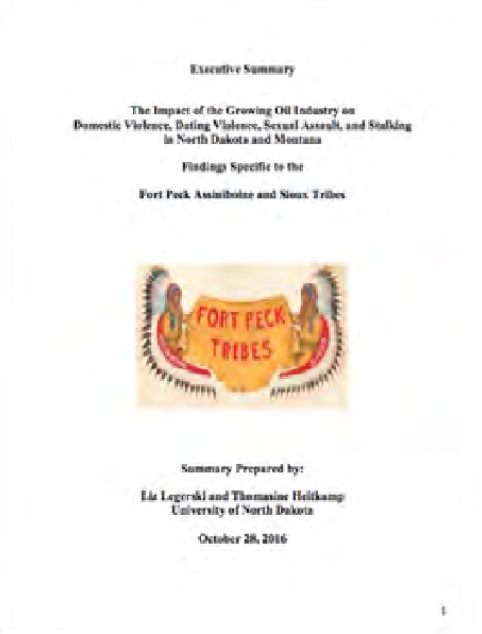
Members of the Fort Peck Assiniboine and Sioux Tribes who participated in this study were concerned about the changes in their community’s general quality of life as a result of the Bakken oil boom. They were particularly concerned about the increased cost of living and how the population increase had impacted residents’ perceptions of safety. While the slowdown in oil production in 2015 may have been expected to alleviate some of the pressures the community was facing, several participants noted that their work as service providers had not diminished much since the fall in oil prices because many people were “stuck” in the area or waiting for the price of oil to rebound. Despite challenges described by participants, the members of the Fort Peck Assiniboine and Sioux Tribes remain committed to combating the social ills they are observing and are hopeful that they will be able to meet the challenges the Bakken oil development has caused.
Findings Specific to the Mandan, Hidatsa, and Arikara Nation— Three Affiliated Tribes of the Fort Berthold Indian Reservation
The Three Affiliated Tribes of the Fort Berthold Indian Reservation, known as the Mandan, Hidatsa, and Arikara (MHA) Nation, have a land mass that lies on both sides of the Missouri River in western North Dakota. Each tribe maintains separate bands, clan systems, and ceremonial bundles. If MHA Nation were a state, it would be the seventh biggest oil producer in the United States behind Oklahoma. It encompasses six counties, including Dunn, McKenzie, McLean, Mercer, Ward, and Mountrail counties in North Dakota. Construction of the Garrison Dam in the late 1940s on their tribal lands resulted in 152,560 acres of river bottom farmland being taken for construction and the relocation of 80% of the tribal membership.
Participants in this study vividly described their distress regarding a perceived increase in occurrences of interpersonal violence. Several participants described how oil development and population changes had contributed to the complexity of family violence and discord. As one participant eloquently summarized, the combination of oil development—which resulted in a disproportionate number of males—the growth in population, and the increase in drug abuse created a “perfect storm” leading to an increase in incidents of interpersonal violence. Additionally, participants reported that the increase in all crimes, including domestic violence, taxed the already limited resources of local law enforcement personnel, human service providers, foster parents, health care personnel, and domestic violence advocates at MHA Nation.
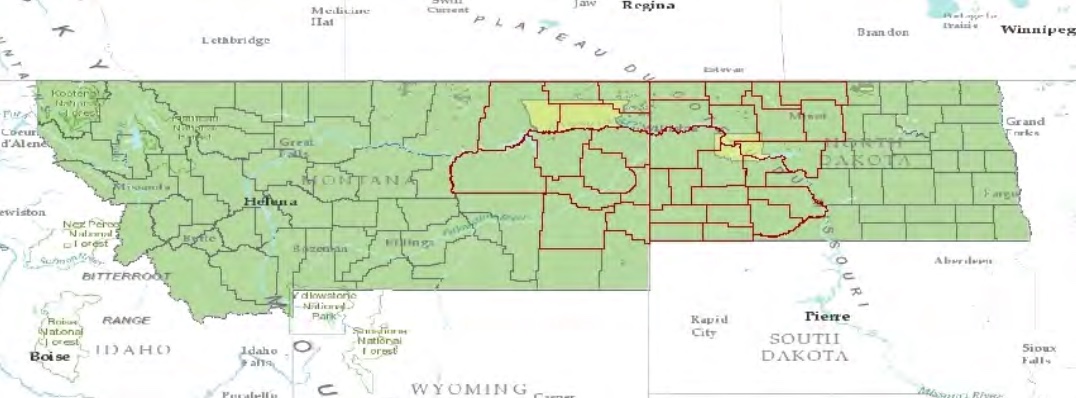
As noted by one participant, this “perfect storm” contributed to a perception regarding the increase in interpersonal violence. The increased use of meth was perceived as a major contributor to not only violence against women, but children as well. We recommend support for existing and future initiatives to help address domestic violence, dating violence, sexual assault,
and stalking. This includes full implementation of the 2013 VAWA Reauthorization Act. We also recommend expanding access to culturally responsive in-patient drug and alcohol treatment services, drug and alcohol abuse counseling services, and other behavioral health services. Programs to support children affected by parental drug abuse or violence are of critical importance, including the expansion of foster care services within the MHA community so that children can remain close to family and community supports when placed out-of-home.
The need for adequate and affordable housing is very important. Efforts to address these concerns prior to the next uptick in oil development are recommended.
Principal investigators of this study are Elizabeth Legerski, PhD, and Thomasine Heitkamp, LICSW, of the University of North Dakota. Twyla Baker-Demaray joined the team in preparation of the summary report for MHA.
